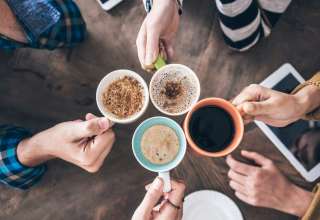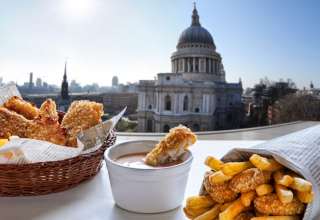Blind tasting is a dark art, but it can tell you all you need to know about a wine. Peter Dean lifts the curtain
There’s a scene from Dial a Deadly Number, an episode of the original TV series of The Avengers, that made an impression on me as a child. To show his impeccably good breeding, John Steed tastes a wine blind and not only gets the grape variety, region, vintage, and producer right, but the exact plot of the single vineyard the grapes came from.
“It’s from the northern end of the vineyard,” he says, eyes twinkling. He’s nailed it.
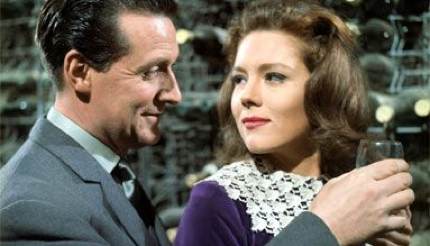
It’s incredibly rare to get all of these key components of a wine correct when blind tasting. But when you do, especially identifying the producer, it can give you goose bumps. The more nonchalant you are, of course, the more impressive it is. You should never on any account admit that you were winging it.
Tasting genuinely blind
When I was in California recently, I took part in an actual blind tasting run by Karen MacNeil, author of the best-selling Wine Bible. The tasting was genuinely blind in the sense that we were blindfolded, while we were led by Henry ‘Hoby’ Wedler, a UC Davis doctoral student in chemistry, who is blind.
We were in a restaurant on the Sonoma Coast overlooking the crashing Pacific Ocean, and all the wines were from Sonoma.
Hoby has a disarming personality and unique perspective on the world. He spoke quickly and exactly, and he demonstrated a field of reference that I hadn’t encountered before. I couldn’t say my sense of smell was heightened in the same way that his obviously was, but he made me recognise a whole range of subtle aromatics.
“This wine has a chutney note…this one is daffodil; this wine is lemony, melon, watermelon…I detect salmon here, not cooked exactly but baked by the fire…here I have lilac and turmeric.”
I have never detected notes of daffodil or turmeric in a wine before but Hoby was right – those aromatics were absolutely there.
It was an illuminating tasting. There was just one major drawback about being blindfolded: my tasting notes were completely illegible.
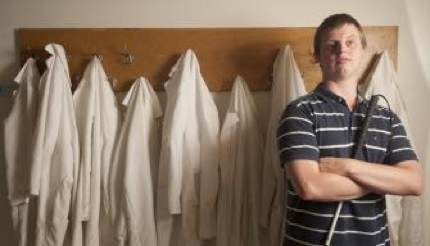
How to blind taste
Blind tasting is the discipline of tasting a wine knowing little or nothing about it. At its most extreme, you’re served the wine in a black glass so you can’t even see if it’s white or red. Or you might be told the vintage and nothing else, or just the region and the vintage, and so on.
Of course there’s always some guesswork involved, but the skill comes in the process of deduction. It’s a bit like the calculations that a mathematician uses – you get kudos for your rationale even if you don’t arrive at exactly the right answer.
Blind tasting is the apotheosis of all wine tasting: you steadfastly have to concentrate solely on what is in the glass.
The principles are by and large the same: you look at, smell, and taste the wine. Your first overall impression gives you a field of reference – what wine is this, is it a single variety or a blend, which varieties, and how old is it, New World or Old World, country, region and style. Throughout the process you ask questions as to the quality of the wine – is it too oaky, does it have sufficient acidity or is it flabby, is it over-ripe?
How to smell
When you smell a wine, the difference between primary, secondary and tertiary aromas will tell you what variety it is and which region it comes from; the vinification process; and age of a wine respectively.
Drill down into yet more detail within these categories and correlate them with your other senses.
For example, a strong smell of white pepper in a red wine means it may well be made from Syrah. If the wine has a good deal of structure and high acidity (think ‘sharp’) it is likely to be Old World and will have used oak in the vinification process. If the structure and tannins are well integrated (ie they are soft, rounded) it now sounds as if you might have a Northern Rhône wine with some age on it in your glass.
If you are not tasting blind apply the same process to your tasting; this helps to educate your palate, and to shed light on both the winemaking process, and whether this is a style you like, and a good example of that style.
How to detect tannin
Winemaking and wine tasting involve many moving parts. As your skills improve you will start being able to identify minute details about the vineyard, grapes, winery, cellar and so on.
Tannin, for example, is one such component.
Tannins are polyphenolic compounds that can come from grape seeds, skins, stems and wooden barrels. You feel rather than taste tannins: they are what makes a wine dry. If they are too obvious (from too much oak, or if the juice has had too much contact with the skins during fermentation), then they will dry out your mouth and cause your lips to pucker. If there is not enough tannin, the wine may be oversweet or over-fruity. Think of the difference between a ripe, sweet, fruity Chilean Merlot, and a classic tannic Bordeaux.
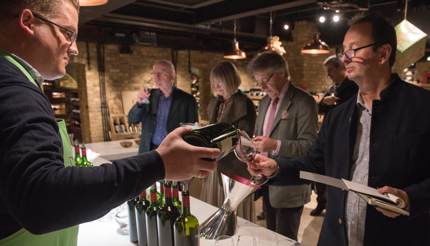
How to detect flaws
Wine is an organic product in a constant state of flux, particularly when it is first exposed to air. This is the point at which a wine fault is best detected and when you are most likely to tell if you have a corked wine or not. The chemical culprit – TCA – can be detected by the human nose in just two parts to a trillion, so you will smell it.
A fully corked wine will hit you like the smell of a wet dog or that odour you get when you open your teenage son’s bedroom – musty wet towels and sports gear. If there is just a hint of TCA, give the wine time as it gets progressively stronger and easier to spot. This, as with all wine tasting, becomes easier with repetition.
Styles and fashions vary – for example unintentionally oxidised wine is a fault but an intentional and essential part of the wine’s style in, say, the Jura or in sherry.
How to be objective
Wine tasting is a highly subjective discipline: it’s very difficult to explain something as intimate as taste or smell, and philosophical oenophiles, like Roger Scruton and Barry Smith, have written extensively on the subject. While there are objective standards – it is quite possible to say that this wine is better than that wine, just as we can say that Jane Austen is a better novelist than Dan Brown – perhaps in the end it’s best to remember what a winemaker said to me recently. “There is no such thing as wine truth. My truth is not your truth and vice versa.”


